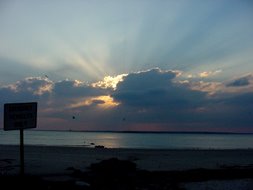Many materials may be used for making painting panels. In this post I'm using birch plywood and fiber board as supports for canvas panels. I prefer 1/4 " or 1/2" birch plywood to fiber board (or white board) because of it's strength and resistance to warping in sizes up to 11" x 14".
In this post I'm using birch plywood and fiber board as supports for canvas panels. I prefer 1/4 " or 1/2" birch plywood to fiber board (or white board) because of it's strength and resistance to warping in sizes up to 11" x 14".
First I cut the board to size and sand it with a medium grit paper or pad.
Glue is applied to the panel with a trowel. The canvas is cut to sizes 1/4" larger on each side to allow for shrinkage.
Glue is also applied to the back of the canvas with a trowel. Several different glues can be used on the panels. It's important that the adhesive used is acid free, archival (ph neutral), and water soluble. I'm using "YES!" brand paste to glue the canvas to these panels.
When the glue has been spread evenly on both the panel and the back of the cut canvas, a brayer (roller) is used to smooth out the glue and air pockets. Start in the middle of the panel and roll out to the edges.
A cover sheet of newspaper can be used when rolling the surface to catch excess glue that comes out at the edges of the canvas.
The panels can either be stacked between paper and dried under weights

like books or

air dried on a flat surface.
After the glue has dried, excess canvas is trimmed from the edges of the panels.

The dried and trimmed canvas panels get another coat of gesso.

When the gesso has dried, the canvas panels are ready for use.
 In this post I'm using birch plywood and fiber board as supports for canvas panels. I prefer 1/4 " or 1/2" birch plywood to fiber board (or white board) because of it's strength and resistance to warping in sizes up to 11" x 14".
In this post I'm using birch plywood and fiber board as supports for canvas panels. I prefer 1/4 " or 1/2" birch plywood to fiber board (or white board) because of it's strength and resistance to warping in sizes up to 11" x 14".


 like books or
like books or  air dried on a flat surface.
air dried on a flat surface. The dried and trimmed canvas panels get another coat of gesso.
The dried and trimmed canvas panels get another coat of gesso. When the gesso has dried, the canvas panels are ready for use.
When the gesso has dried, the canvas panels are ready for use.
